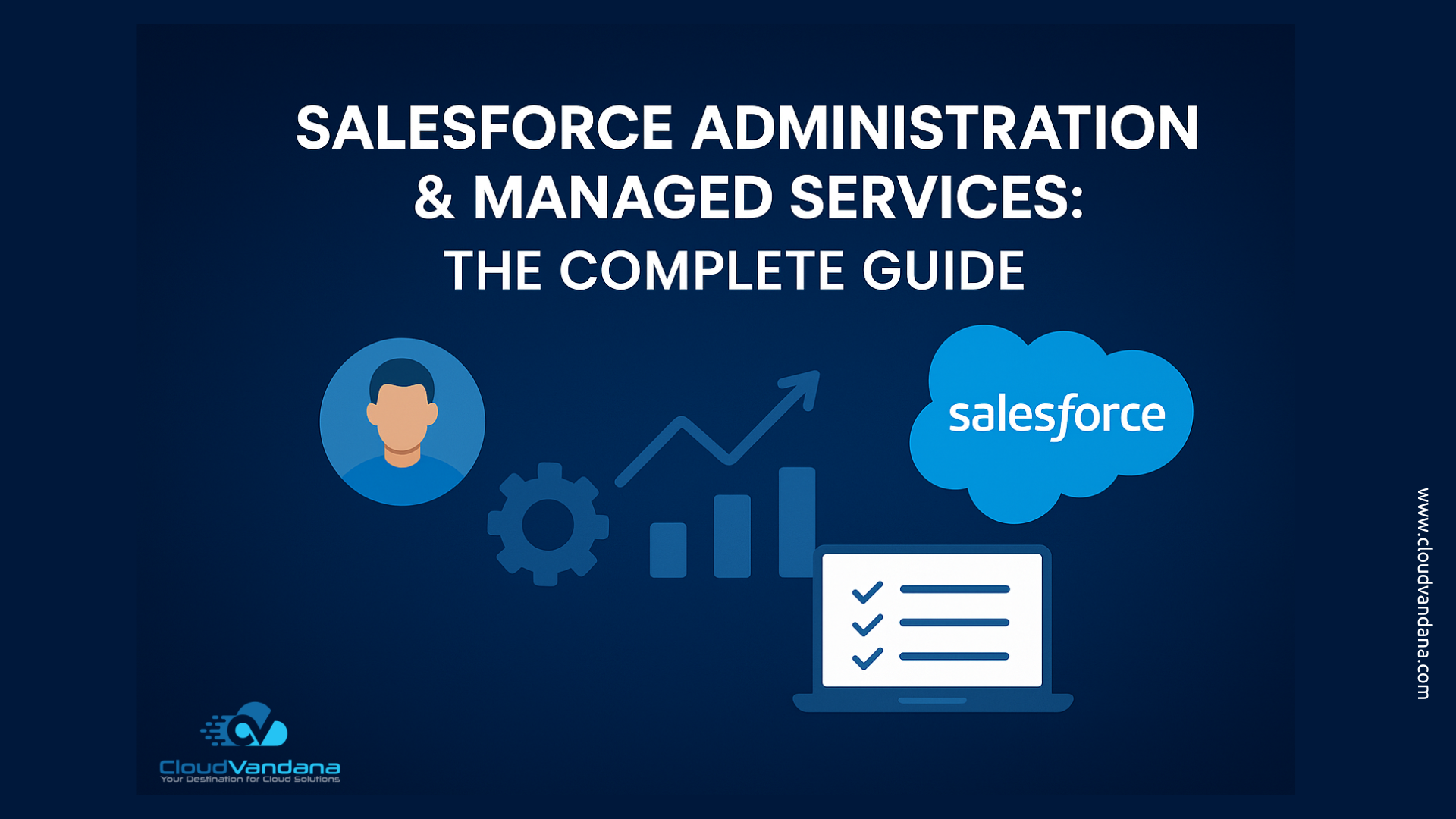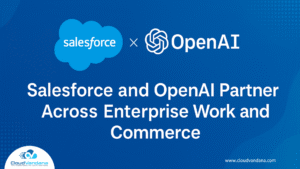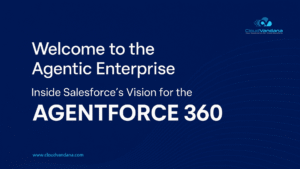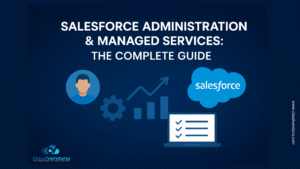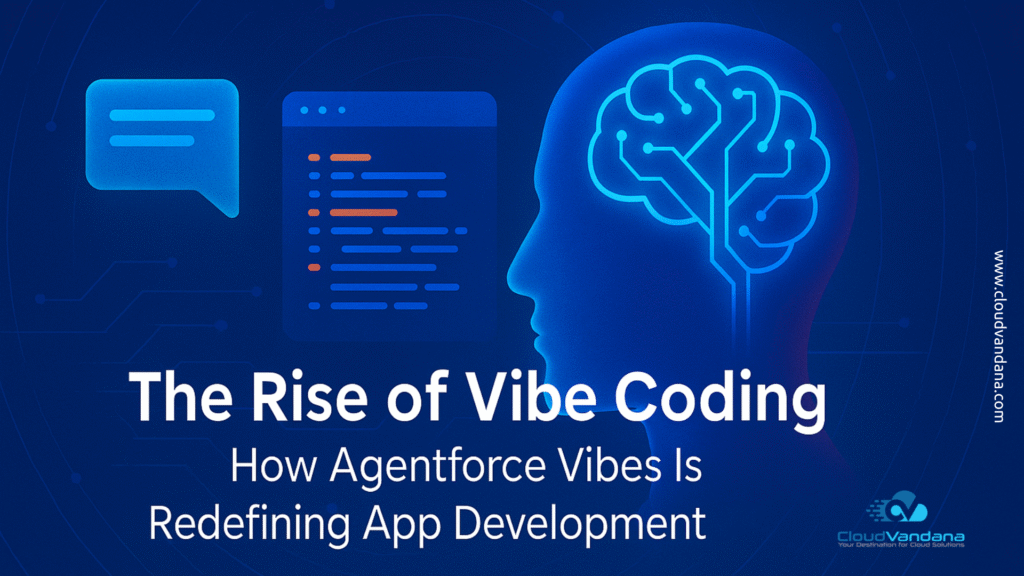Introduction: The Backbone of Every Salesforce-Powered Enterprise
In the fast-evolving digital landscape, where every interaction and insight counts, Salesforce stands as the nerve center of modern business operations. It’s not just a CRM—it’s the foundation upon which organizations build relationships, scale growth, and deliver exceptional experiences. Yet, like every powerful engine, Salesforce performs at its best only when maintained, tuned, and managed with precision.
That’s where Salesforce Administration and Managed Services come into play.
They are the unseen architects behind the dashboards, reports, and workflows that fuel productivity and decision-making. They ensure that Salesforce doesn’t just store data—it drives strategy, innovation, and revenue.
This guide explores the full spectrum of Salesforce Administration and Managed Services—how they work, why they matter, and how b usinesses can use them to future-proof their operations.
What Exactly Is Salesforce Administration?
Salesforce Administration is the discipline of managing, customizing, and optimizing the Salesforce platform to suit a company’s unique business processes. It’s part science, part strategy, and part intuition.
A Salesforce Admin ensures that every component—from user roles and permissions to dashboards and automations—functions in harmony. They bridge the gap between business needs and technology. When a sales leader wants cleaner pipeline visibility, or a marketing manager needs smarter segmentation, the admin is the enabler who makes it happen.
It’s not about maintaining software—it’s about crafting a system that breathes efficiency into every workflow.
The Changing Role of a Salesforce Admin in the Modern Era
A decade ago, Salesforce Admins were primarily system operators—handling user setup, running reports, and fixing basic issues. Today, they’ve evolved into strategic collaborators and digital transformation enablers.
Admins now understand business models, KPIs, and customer journeys. They sit in meetings with leadership teams, advising on automation opportunities or data governance frameworks. They champion CRM adoption, ensure compliance, and support cross-functional alignment.
In short, today’s Salesforce Admin isn’t just an operator—they’re a catalyst for organizational agility.
From Setup to Scale: How Salesforce Admins Keep Systems Running Seamlessly
From the moment a Salesforce org is set up, it enters a cycle of constant evolution—new users, new data, new goals. Admins ensure that everything remains coherent amid this flux.
They maintain data hygiene, design efficient page layouts, and keep validation rules in check. They test automation logic, manage integration points, and anticipate the impact of every configuration change.
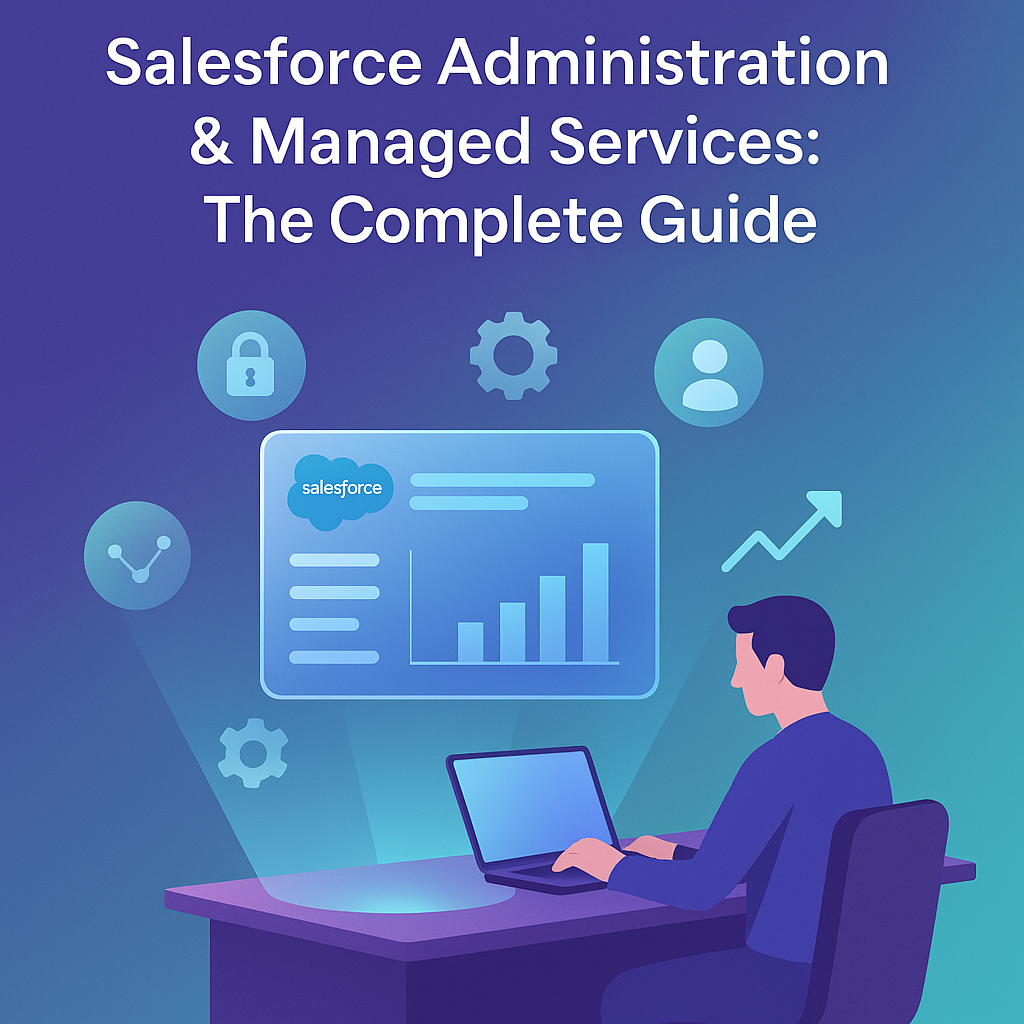
When your team sees a seamless lead flow or a real-time analytics dashboard, it’s not magic—it’s the handiwork of a well-trained admin ensuring every gear turns in perfect sync.
Common Pain Points Companies Face Without a Dedicated Admin
Many companies underestimate the complexity of Salesforce management—until things start breaking. Without a dedicated admin, data duplication multiplies, workflows clash, and reports become unreliable. Users lose confidence in the system, and adoption plummets.
Consider this: A sales team spends more time correcting data errors than closing deals. Marketing campaigns misfire because lists aren’t segmented properly. IT scrambles to fix automations that trigger incorrectly. Over time, what was once a robust CRM turns into an expensive liability.
An experienced Salesforce Admin prevents that spiral. They bring order to chaos, clarity to data, and continuity to business operations.
What Are Salesforce Managed Services?
Salesforce Managed Services go beyond administration—they provide ongoing expertise, optimization, and support through a dedicated team of certified professionals. It’s a strategic partnership where experts proactively monitor, maintain, and evolve your Salesforce environment to meet business goals.
Think of it as having an entire Salesforce command center—one that not only fixes issues but also anticipates them. From release management to automation audits, from security compliance to process re-engineering, Managed Services cover every angle of Salesforce excellence.
The Shift from In-House Management to Managed Services
In-house teams are often stretched thin. As Salesforce becomes more integral to operations—integrating marketing, analytics, and AI—internal resources can’t always keep up. Recruiting certified talent, maintaining training cycles, and handling platform updates adds up quickly.
Managed Services eliminate these challenges. Businesses get a pool of experts available on demand—admins, developers, architects, and consultants—without having to expand headcount. It’s like extending your internal team with external mastery, ensuring that every update, feature, or bug fix happens without disruption.
This shift allows organizations to focus on what truly matters: strategy, growth, and customer experience.
Why Managed Services Have Become Indispensable for Salesforce Success
In the modern enterprise, speed and precision define competitiveness. Managed Services provide both. They turn Salesforce from a static CRM into a living ecosystem that evolves with your business.
With continuous monitoring, performance tuning, and proactive support, managed teams keep your system optimized, your users productive, and your data secure. They not only solve problems—they prevent them.
It’s no surprise that companies across industries are moving toward managed models to reduce costs, improve uptime, and accelerate digital transformation.
Key Components of Salesforce Managed Services
a. Proactive System Monitoring
Round-the-clock system health checks ensure that errors are identified before users even notice them. Managed service teams monitor integrations, API calls, and performance metrics to maintain operational smoothness.
b. Regular Health Checks and Optimization
Every few weeks or months, Salesforce undergoes minor updates that affect performance. Managed service providers perform periodic audits to remove bottlenecks, optimize code, and streamline automation flows.
c. Security Management and Compliance
In a world of rising data privacy regulations, maintaining compliance is non-negotiable. Managed teams implement permission sets, encryption policies, and access controls to safeguard sensitive information.
d. Release Management and Upgrades
Salesforce rolls out three major updates annually. Managed service experts test new features in sandbox environments, identify compatibility issues, and ensure a smooth transition without affecting business continuity.
e. End-User Support and Training
A powerful CRM is only as effective as the people using it. Managed services include user training, documentation, and ongoing support to drive adoption and proficiency.
Salesforce Administration vs. Salesforce Managed Services
While both roles are essential, they serve different purposes.
Salesforce Administration is tactical—it manages day-to-day operations, configurations, and user support. Managed Services, on the other hand, are strategic—they provide continuous improvement, scalability, and proactive management.
In essence, an admin keeps the system running; Managed Services keep it evolving.
The Synergy Between Admins and Managed Service Teams
The magic happens when in-house admins and Managed Service providers work together. Internal admins bring institutional knowledge—understanding the company’s culture, workflows, and people. Managed Service experts bring deep technical insight and multi-industry best practices.
Together, they create a perfect balance between personalization and performance. It’s collaboration that elevates Salesforce from a tool into a competitive advantage.
Benefits of Partnering with a Salesforce Managed Services Provider
Partnering with a Managed Service provider offers immediate and long-term benefits:
- Access to certified experts: Gain specialized skills without hiring full-time staff.
- Proactive optimization: Identify and resolve inefficiencies before they escalate.
- Business continuity: Ensure uptime and reliability even during complex upgrades.
- Strategic insights: Leverage analytics and best practices from seasoned professionals.
The outcome is a Salesforce ecosystem that grows smarter and more efficient every quarter.
Cost Efficiency: A Smarter Way to Manage Salesforce
Maintaining a full in-house Salesforce team—admins, developers, architects, analysts—can cost hundreds of thousands annually. Managed Services offer the same level of expertise for a fraction of that cost.
With fixed monthly or quarterly pricing, businesses enjoy predictability in budgeting and scalability in capability. Instead of paying for idle capacity, they pay for real results.
It’s operational efficiency meets financial intelligence.
Strategic Scalability: Growing Without Growing Overheads
As your business expands, your Salesforce demands evolve. You might need new integrations, custom workflows, or cross-cloud automation. Managed Services scale dynamically to match that growth—no recruitment delays, no training periods.
You can scale up during high-demand periods and scale down during quieter months—ensuring resource flexibility without losing momentum.
Continuous Innovation Through Expert Governance
Salesforce releases over a thousand new features every year. Without expert governance, businesses risk missing out on valuable innovations. Managed Services ensure that every new functionality—whether in Einstein AI, Flow, or AppExchange—is evaluated and implemented strategically.
They transform reactive management into continuous innovation.
The Technology Layer: Tools That Power Managed Services
Behind every Managed Service is a robust technology stack. Providers use advanced monitoring tools, DevOps pipelines, integration checkers, and sandbox environments to manage deployments efficiently.
Automation tools track performance anomalies, while analytics dashboards provide clients with real-time visibility into usage, adoption, and ROI.
This fusion of human expertise and technology delivers unmatched reliability.
How Managed Services Ensure Peak CRM Performance
Peak performance isn’t achieved by accident—it’s engineered. Managed Services fine-tune the CRM to perform flawlessly even during peak load. They optimize query performance, manage API limits, clean data redundancies, and ensure high-speed report generation.
The result is a CRM that feels lighter, faster, and more intelligent.
Managed Services for Different Salesforce Clouds
a. Sales Cloud
Managed teams streamline lead management, opportunity tracking, and forecasting accuracy—turning sales data into predictable revenue growth.
b. Service Cloud
From automated case routing to AI-driven chatbots, Managed Services ensure your service teams deliver faster, more personalized customer support.
c. Marketing Cloud
They optimize campaign journeys, email personalization, and audience segmentation—ensuring marketing automation works in harmony with CRM data.
d. Experience Cloud
Managed teams build secure portals and community experiences that improve customer and partner engagement.
e. Commerce Cloud
They maintain product catalogs, manage order workflows, and personalize online shopping experiences.
Each cloud, though distinct, benefits equally from proactive management and continuous optimization.
Choosing the Right Salesforce Managed Service Partner
The right partner can transform your Salesforce journey. Look for:
- Certified expertise: Proven credentials across clouds and products.
- Clear communication: Transparent processes and measurable deliverables.
- Strategic alignment: A partner who understands your business, not just your software.
- Track record: Case studies that show tangible business outcomes.
A true partner doesn’t just maintain Salesforce—they help you master it.
Questions to Ask Before You Outsource Salesforce Administration
Before choosing a Managed Service provider, ask:
- How do you measure performance and ROI?
- What is your escalation process for critical issues?
- How do you ensure compliance with my industry regulations?
- Do you offer flexible pricing or packages based on scope?
- Can I scale up or down as needed?
The answers reveal the maturity, reliability, and alignment of your potential partner.
Common Myths About Salesforce Managed Services
Myth 1: Managed Services are only for large enterprises.
Reality: Small and mid-sized businesses often gain even more value by outsourcing.
Myth 2: Outsourcing means losing control.
Reality: Managed Services provide transparency and governance dashboards that give you more visibility, not less.
Myth 3: Managed Services are too expensive.
Reality: They typically reduce overall operational costs by 30–50%.
Real-World Use Cases: How Businesses Achieved 10x Efficiency
A global manufacturing firm leveraged Managed Services to automate lead assignment, reducing response time by 45%.
A healthcare startup cut manual data entry by 60% through Flow automation.
A financial enterprise achieved 99.9% uptime through proactive monitoring and sandbox testing.
In every case, Managed Services transformed Salesforce from a reactive tool into a proactive growth engine.
The Future of Salesforce Administration in an AI-Driven World
As Salesforce embraces AI through Einstein, Agentforce, and Data Cloud, the admin’s role is expanding once again. Admins are now AI orchestrators—configuring predictive models, validating ethical AI outputs, and ensuring humans remain in control of automation.
Managed Services, too, are evolving—using AI to predict system issues, recommend process improvements, and enhance personalization.
The future belongs to intelligent collaboration between humans and machines—where data insights are instant, and innovation is continuous.
How CloudVandana’s Managed Services Elevate Business Value
CloudVandana’s Salesforce Managed Services embody the perfect blend of strategy, skill, and scalability. With certified consultants, seasoned architects, and proactive governance, they help businesses unlock the full potential of Salesforce.
From optimizing Sales Cloud pipelines to orchestrating enterprise-wide automation, CloudVandana ensures your CRM doesn’t just run—it thrives. The result is faster adoption, higher ROI, and a Salesforce ecosystem built to scale with your ambitions.
Conclusion: A Continuous Partnership for Continuous Success
Salesforce Administration and Managed Services are not temporary solutions—they’re long-term success enablers. Together, they create a living, breathing CRM ecosystem that grows, adapts, and innovates with your business.
Whether you’re a startup scaling rapidly or an enterprise optimizing across global markets, the right combination of administration and managed expertise ensures Salesforce remains your most powerful competitive advantage.
Because in the connected enterprise era, sustained excellence isn’t built once—it’s managed continuously.
Frequently Asked Questions (FAQs)
1. What does a Salesforce Administrator do on a daily basis?
A Salesforce Administrator manages user access, maintains data quality, builds reports and dashboards, configures automation, and ensures the CRM runs smoothly. They act as the bridge between business users and the technical environment, aligning Salesforce with the organization’s goals.
2. Why are Salesforce Managed Services important?
Salesforce Managed Services provide continuous support, optimization, and governance for your CRM. Instead of reacting to issues, these services proactively monitor performance, apply best practices, and introduce new enhancements that keep your Salesforce instance future-ready.
3. How are Managed Services different from having an in-house Salesforce Admin?
An in-house admin handles daily operations, while Managed Services provide a dedicated team of experts covering advanced areas—like automation strategy, release management, data governance, and integration optimization. It’s a more comprehensive, scalable model for long-term success.
4. What types of businesses need Salesforce Managed Services?
Any organization that uses Salesforce as a core system—whether a small startup or a global enterprise—can benefit. Companies with growing data volumes, multiple integrations, or limited internal Salesforce expertise often see the greatest ROI.
5. What’s included in a Salesforce Managed Services package?
Typical packages include system monitoring, health checks, security management, release upgrades, customization, user training, and admin support. Some providers also include consulting, development, and data analytics to align technology with business outcomes.
6. How do Managed Services help reduce Salesforce costs?
Instead of hiring multiple full-time specialists, businesses pay a predictable monthly or quarterly fee for complete support. This reduces overhead costs, prevents system downtime, and maximizes ROI through continuous optimization.
7. How often should a Salesforce org undergo a health check?
Ideally, a Salesforce org should be reviewed at least once a quarter. Regular health checks identify redundant fields, inactive automations, security risks, and performance bottlenecks—ensuring the system stays lean and effective.
8. Are Managed Services suitable for companies using multiple Salesforce Clouds?
Absolutely. Managed Service providers support Sales Cloud, Service Cloud, Marketing Cloud, Experience Cloud, and Commerce Cloud. They manage each cloud’s unique configurations and integrations, ensuring cohesive functionality across the enterprise.
9. Can I still keep my internal Salesforce team if I choose Managed Services?
Yes. Managed Services are meant to complement—not replace—your internal team. Your in-house admins focus on business context and user needs, while the managed service team brings specialized technical expertise and strategic guidance.
10. How does data security work under Managed Services?
Certified Managed Service providers follow Salesforce best practices for data security—implementing permission sets, audit trails, IP restrictions, and encryption. They also help ensure compliance with standards like GDPR, HIPAA, and SOC 2.
11. How do Salesforce Managed Services adapt to new Salesforce releases?
Managed Service teams test each Salesforce update in sandbox environments, review release notes, and apply changes in a controlled manner. This guarantees your org remains compatible, secure, and takes advantage of new features without downtime.
12. Why choose CloudVandana for Salesforce Managed Services?
CloudVandana combines deep Salesforce expertise with a consultative approach. Our team of certified professionals provides proactive monitoring, optimization, automation, and strategic support—helping businesses stay agile, efficient, and future-ready in an ever-evolving Salesforce ecosystem.
.

Atul Gupta is CloudVandana’s founder and an 8X Salesforce Certified Professional who works with globally situated businesses to create Custom Salesforce Solutions.
Atul Gupta, a dynamic leader, directs CloudVandana’s Implementation Team, Analytics, and IT functions, ensuring seamless operations and innovative solutions.



